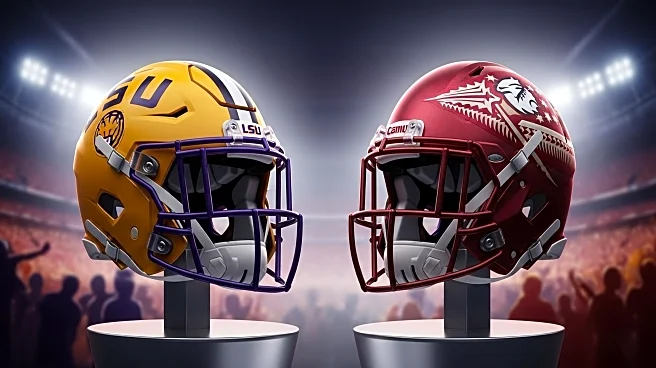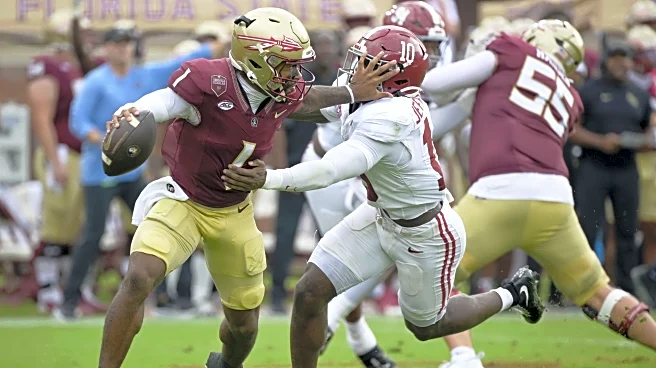What's Happening?
The college football season has kicked off with significant shifts in team rankings following Week 1. LSU has claimed the top spot after a decisive 17-10 victory over Clemson, showcasing their dominance in the second half of the game. Florida State also made a substantial leap from No. 49 to No. 3 after defeating Alabama 31-17. Other notable movements include Miami's rise to No. 4 after a win against Notre Dame, and Texas, Clemson, and Notre Dame maintaining positions within the top 10 despite losses to fellow top-ranked teams. The rankings reflect a combination of resume and performance, rewarding teams for big wins and close losses against top opponents.
Why It's Important?
These early-season rankings are crucial as they set the tone for the rest of the college football season. Teams like LSU and Florida State have demonstrated their potential to be strong contenders for the national championship. The rankings also impact team morale and fan engagement, influencing ticket sales and viewership. For teams that have fallen, such as Alabama, the rankings serve as a wake-up call to address weaknesses and strategize for upcoming games. The volatility of early rankings highlights the competitive nature of college football and the importance of each game in shaping the season's narrative.
What's Next?
As the season progresses, teams will continue to face challenging opponents, which will further influence their rankings. LSU and Florida State will aim to maintain their top positions by securing victories in upcoming games. Teams that have dropped in rankings, like Alabama, will need to regroup and focus on improving their performance to climb back up. The rankings will adjust as more data becomes available, providing a clearer picture of which teams are genuine contenders for the championship.
Beyond the Headlines
The rankings not only affect the teams but also have broader implications for college football programs, including recruitment and funding. High rankings can attract top talent and increase financial support from alumni and sponsors. Conversely, teams that struggle may face challenges in maintaining their program's competitiveness and securing future investments.













